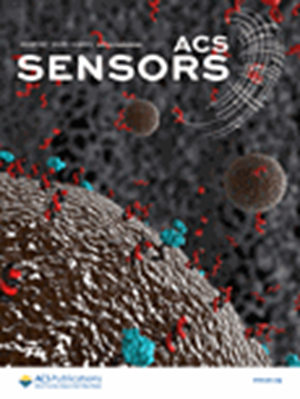Ultrafast Intelligent Sensor for Integrated Biological Fluorescence Imaging and Recognition
IF 8.2
1区 化学
Q1 CHEMISTRY, ANALYTICAL
引用次数: 0
Abstract
Fluorescence imaging and recognition are core technologies in targeted medicine, pathological surgery, and biomedicine. However, current imaging and recognition systems are separate, requiring repeated data transfers for imaging and recognition that lead to delays and inefficiency, hindering the capture of rapidly changing physiological processes and biological phenomena. To address these problems, we propose an integrated intelligent sensor for biological fluorescence imaging and ultrafast recognition. This sensor integrates an imaging system based on a photodetector array and a recognition system based on neural networks on a single chip, featuring a highly compact structure, a continuously adjustable optical response, and reconfigurable electrical performance. The unified architecture of the imaging and recognition systems enables ultrafast recognition (19.63 μs) of tumor margins. Additionally, the special organic materials and bulk heterojunction structure endow the photodetector array with strong wavelength dependence, achieving high specific detectivity (3.06 × 1012 Jones) in the narrowband near-infrared range commonly used in biomedical imaging (600–800 nm). After training, the sensor can accurately recognize biological fluorescence edges in real time, even under interference from other colored light noise. Benefiting from its rapidity and high accuracy, we demonstrated a simulated surgical experiment showcasing tumor edge fluorescence imaging, recognition, and cutting. This integrated approach holds the potential to establish a novel paradigm for designing and manufacturing intelligent medical sensors.

集成生物荧光成像与识别的超快智能传感器
荧光成像与识别是靶向医学、病理外科、生物医学等领域的核心技术。然而,目前的成像和识别系统是分开的,成像和识别需要重复的数据传输,导致延迟和低效率,阻碍了捕捉快速变化的生理过程和生物现象。为了解决这些问题,我们提出了一种用于生物荧光成像和超快速识别的集成智能传感器。该传感器在单个芯片上集成了基于光电探测器阵列的成像系统和基于神经网络的识别系统,具有高度紧凑的结构、连续可调的光学响应和可重构的电性能。成像和识别系统的统一架构使肿瘤边缘的超快识别(19.63 μs)成为可能。此外,特殊的有机材料和体异质结结构使光电探测器阵列具有较强的波长依赖性,在生物医学成像常用的窄带近红外范围(600-800 nm)内实现了3.06 × 1012 Jones的高比探测率。经过训练后,即使受到其他色光噪声的干扰,传感器也能实时准确地识别生物荧光边缘。得益于其快速和高精度,我们演示了一个模拟手术实验,展示了肿瘤边缘的荧光成像,识别和切割。这种集成的方法有可能为设计和制造智能医疗传感器建立一个新的范例。
本文章由计算机程序翻译,如有差异,请以英文原文为准。
求助全文
约1分钟内获得全文
求助全文
来源期刊

ACS Sensors
Chemical Engineering-Bioengineering
CiteScore
14.50
自引率
3.40%
发文量
372
期刊介绍:
ACS Sensors is a peer-reviewed research journal that focuses on the dissemination of new and original knowledge in the field of sensor science, particularly those that selectively sense chemical or biological species or processes. The journal covers a broad range of topics, including but not limited to biosensors, chemical sensors, gas sensors, intracellular sensors, single molecule sensors, cell chips, and microfluidic devices. It aims to publish articles that address conceptual advances in sensing technology applicable to various types of analytes or application papers that report on the use of existing sensing concepts in new ways or for new analytes.
 求助内容:
求助内容: 应助结果提醒方式:
应助结果提醒方式:


